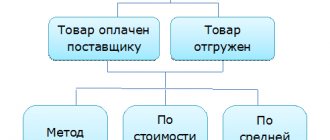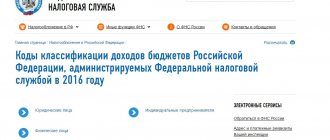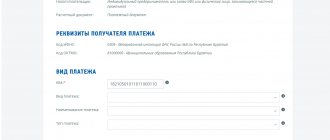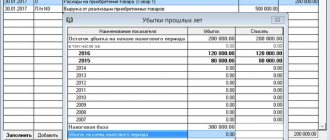simplified tax system
When calculating the single tax on the difference between income and expenses, documented and paid expenses for the purchase of fuel and lubricants can be included in the costs (depending on the nature of the use of transport) (subclause 12, 5 clause 1, clause 2 of Article 346.16 of the Tax Code of the Russian Federation) .
The VAT amounts on these expenses also reduce the tax base for the single tax (subclause 8, clause 1, article 346.16 of the Tax Code of the Russian Federation). When calculating the single income tax, expenses for fuel and lubricants cannot be taken into account (Clause 1, Article 346.18 of the Tax Code of the Russian Federation).
Situation: when can the cost of fuels and lubricants purchased in cash be included in expenses for calculating a single tax? An organization (entrepreneur) applies a simplified tax system and pays a single tax on the difference between income and expenses.
Organizations and entrepreneurs who apply the simplification and pay a single tax on the difference between income and expenses can include the costs of purchasing fuel and lubricants as part of the costs of maintaining official vehicles (subclause 12, clause 1, article 346.16 of the Tax Code of the Russian Federation) or as part of material costs ( subparagraph 5, paragraph 1, article 346.16 of the Tax Code of the Russian Federation).
When simplified, expenses are accounted for on a cash basis. Therefore, in the situation under consideration, the costs of fuel and lubricants included in the cost of maintaining transport can be recognized if the following conditions are simultaneously met:
- Fuel and lubricants purchased;
- expenses paid.
This follows from the provisions of paragraph 2 of Article 346.17 of the Tax Code of the Russian Federation.
When calculating the single tax, take into account material expenses in the manner prescribed for calculating income tax (clause 2 of article 346.16, article 254 of the Tax Code of the Russian Federation). An exception to this rule is the cost of purchasing raw materials and materials. After payment, the cost of such valuables can be included in the calculation of the tax base, without waiting for them to be written off for production (subclause 1, clause 3, article 273, subclause 1, clause 2, article 346.17 of the Tax Code of the Russian Federation). Therefore, based on the literal interpretation of paragraph 2 of paragraph 2 of Article 346.16 and paragraph 2 of Article 346.17 of the Tax Code of the Russian Federation, when calculating the single tax, the cost of purchased fuels and lubricants can be taken into account immediately after payment, regardless of when the fuel was written off. The same conclusion can be drawn from letters from the Ministry of Finance of Russia dated December 23, 2009 No. 03-11-09/413 and the Federal Tax Service of Russia for Moscow dated January 30, 2009 No. 19-12/007413.
Such expenses can be taken into account in full when calculating the single tax, but provided that they are economically justified and documented.
In particular, you will need documents confirming:
- cost of purchased materials (invoices, invoices, sales receipts);
- payment for purchased materials (payment orders, cash receipts, receipts);
- the amount of materials consumed during the operation of the vehicle (waybills).
This conclusion follows from the provisions of paragraph 2 of Article 346.16, paragraph 1 of Article 252 of the Tax Code of the Russian Federation, letters of the Federal Tax Service of Russia dated November 22, 2010 No. ShS-37-3/15988, Federal Tax Service of Russia for Moscow dated January 30, 2009 No. 19 -12/007413 and is confirmed by arbitration practice (see, for example, the decision of the Supreme Arbitration Court of the Russian Federation dated August 25, 2008 No. 10353/08, the resolution of the Federal Antimonopoly Service of the Central District dated April 18, 2008 No. A36-3124/2006, the West Siberian District dated March 17, 2009 No. F04-1471/2009(2200-A03-19)).
Samples of waybills were approved by Decree of the Goskomstat of Russia dated November 28, 1997 No. 78. The forms given in it are mandatory only for organizations engaged in motor transport activities (clause 2 of Decree of the Goskomstat of Russia dated November 28, 1997 No. 78). However, in practice they can also be used by entrepreneurs. In addition, entrepreneurs can use a form developed independently. At the same time, the details of waybills, which are required to be filled out by entrepreneurs, were approved by Order of the Ministry of Transport of Russia dated September 18, 2008 No. 152.
The amount of expenses for fuel and lubricants, which are included in the calculation of the tax base for the single tax, is indicated in section I of the book of accounting for income expenses (clauses 2.1–2.3, 2.5 of the Procedure approved by order of the Ministry of Finance of Russia dated October 22, 2012 No. 135n).
An example of reflecting expenses for fuel and lubricants in the book of income and expenses. The entrepreneur applies a simplification; the single tax is calculated from the difference between income and expenses
An entrepreneur registered in Moscow uses a Skoda Fabia car in his activities (total mileage - 55,000 km).
On February 5, he set off in this car to deliver information materials to his clients.
To refuel the car, the entrepreneur purchased 25 liters of AI-95 gasoline for a total of 800 rubles. VAT is not mentioned on the cash receipt.
The waybill for February 5 reflects the following data:
- the remaining fuel in the tank upon departure is 5 liters;
- the remaining fuel in the tank upon return is 7 liters;
- vehicle mileage during a business trip is 200 km.
The entrepreneur decided to write off expenses for fuel and lubricants in accordance with the standards approved by the order of the Ministry of Transport of Russia dated March 14, 2008 No. AM-23-r. Based on this, he established:
- basic fuel consumption rate - 7.7 l/100 km;
- bonus for working in a city with a population of over 3 million people – 25 percent;
- bonus for work in winter – 10 percent;
- surcharge for using air conditioning in a car – 7 percent.
When calculating standard fuel consumption, he used the formula (clause 2.1 of section 2 of the Methodological Recommendations, approved by order of the Ministry of Transport of Russia dated March 14, 2008 No. AM-23-r):
| Standard fuel consumption, l | = | 0,01 | × | Basic fuel consumption (l/100 km) | × | Vehicle mileage, km | × | 1 + 0.01 × correction factor, % |
The entrepreneur calculated the correction factor necessary to determine standard fuel consumption as follows: 25% + 10% + 7% = 42%.
Standard fuel consumption was: 0.01 × 7.7 l/100 km × 200 km × (1 + 0.01 × 42) = 21.87 l.
The amount of expenses for fuels and lubricants (within the norms) that an entrepreneur takes into account when calculating the single tax is equal to: 21.87 l × 800 rubles. : 25 l = 699.84 rub.
The entrepreneur formalized the calculation made in the form of a certificate. The entrepreneur reflected expenses for fuel and lubricants within the norms in the book of income and expenses.
In what cases is a waybill not needed?
Gasoline and other fuels and lubricants can be used not only for transport needs. For example, an organization uses a lawnmower to maintain its grounds. The unit is fueled with gasoline. Obviously, using a waybill to confirm its consumption is meaningless here. In such cases, use the technical documentation for the unit, which indicates the consumption rates of gasoline per hour of operation and oils (usually indicated per liter of fuel consumption).
Another option is to establish experimentally in the presence of a commission how much fuel and lubricants are actually burned per unit of time. These indicators and calculations are entered into the local NA, for example “Lawn mower performance indicators”. If the same territory is being cultivated, then its area is known and the amount of time required for mowing and gasoline consumption can be determined.
After the work is completed, on the basis of a work order or other supporting document, an act for writing off fuel and lubricants is drawn up. It indicates the area of the mowed area, the operating time of the unit, the name and quantity of gasoline consumed, its price and the cost charged to expenses. The act includes information that the established standards for fuel consumption are not exceeded, the expenses are justified and the gasoline is subject to write-off. The document is signed by the members of the commission and certified by the director.
Organizations that are not involved in transportation, but have official or industrial transport, can do accounting work without waybills (Ministry of Finance, document No. 03-03-06/1/354 dated 16/06/11):
- When using the GLONASS system or other similar control systems. The software allows you to make printouts - reports reflecting all indicators of the movement of the machine.
- If the route does not change, for example, the car is intended for daily transportation of workers. The number of trips, mileage, and gasoline consumption will be constant, therefore, write-offs can be applied according to approved fuel consumption standards. An organization can develop a document form that controls travel and gasoline consumption within a month on its own.
The write-off of fuel and lubricants is carried out on the basis of these documents by a write-off act.
By the way! Carriers can use tachographs, GLONASS, GPS systems as an auxiliary tool for monitoring fuel consumption.
Options for accounting for fuel and lubricants in 1C: Accounting 8
Fuel can be purchased in cash or non-cash. If the organization has chosen a non-cash form, then a supply agreement is concluded with the fuel supplier, according to which the organization transfers funds to the supplier’s bank account, and in return receives coupons or fuel cards, with which drivers refuel cars at gas stations (gas stations).
Accounting for fuel and lubricants using coupons
To account for transactions using fuel coupons, it matters what type of coupons are used and at what point the ownership of fuel and lubricants is transferred to the organization. Depending on the terms of the agreement for the supply of petroleum products, ownership of the gasoline received may pass to the organization either at the time of receipt of coupons or at the time of refueling the car at a gas station.
If, under an agreement with the supplier, ownership of fuels and lubricants is transferred to the organization at the time of refueling the car at a gas station, then coupons for fuels and lubricants can be taken into account as part of monetary documents in account 50.03 “Cash documents”.
In the program "1C: Accounting 8" (rev. 3.0), the following documents are used for accounting for fuel as part of monetary documents:
- Receipt of monetary documents and Issuance of monetary documents (section Bank and cash desk) - to register the receipt of coupons from the supplier and transfer them to the driver;
- Advance report (section Bank and cash desk) - to reflect the purchase of fuel and lubricants;
- Request invoice (Warehouse section) - for writing off purchased fuel and lubricants as expenses.
If, under an agreement with the supplier, ownership of fuel and lubricants passes to the organization at the time of transfer of fuel coupons, then the supplier, simultaneously with the coupons, transfers to the organization a set of documents for fuel (waybill, invoice). In this case, it is necessary to stipulate in the contract that the fuel is in responsible storage with the supplier until the fuel coupon is presented and fuel is poured into the car tank. The receipt and issuance of coupons for fuel and lubricants should be registered in a special journal - the coupon book.
In the program “1C: Accounting 8” (rev. 3.0), the following documents are used to account for fuel and lubricants with the transfer of ownership at the time of receipt of coupons:
- Receipts (acts, invoices) (Purchases section) - to register the purchase of fuel;
- Movement of goods (Warehouse section) - to reflect the actual filling of fuel from the gas station into the tank of the car;
- Request invoice (Warehouse section) - for writing off fuel as an expense.
| 1C:ITS For more information about accounting for fuel and lubricants in cash and using coupons, see the section “Instructions for accounting in 1C programs”: “Purchase of fuel and lubricants using an advance report (sales receipt without an invoice)”, “Accounting for fuel and lubricants using coupons with transfer of ownership at the moment receipt of coupons”, “Accounting for fuel and lubricants using coupons with transfer of ownership at the time of receipt of coupons”. |
Accounting for fuel and lubricants using a fuel card
A fuel card is a microprocessor-based non-bank plastic card with a PIN code and a chip that carries information:
- on established limits, quantity and range of petroleum products and related services;
- and/or the amount of money within which petroleum products and related services can be obtained at a gas station.
To purchase fuel using cards, the company enters into an agreement with the fuel supplier (this can be a processing center that acts as the issuer of the fuel card and operates under commission agreements with fuel owners). Depending on the terms of the contract, the fuel card can be transferred to the organization and serviced free of charge or for a fee.
An organization may have several fuel cards at its disposal. Fuel cards in an organization are assigned either to the driver or to the vehicle. Neither money nor liters are credited to each individual card. The supplier stores information as a whole for the entire purchasing organization, and the fuel card is a technical means for individual drivers to obtain fuel and services at the gas station.
When receiving fuel at a gas station, the driver receives a receipt confirming the refueling completed, which should be attached to the waybill. At the time specified in the contract (at the end of the month or more often), the fuel supplier provides the organization with a set of documents for the specified period:
- report on the brand and quantity of fuel provided (register of transactions carried out using fuel cards);
- financial documents (delivery note and invoice).
In the program "1C: Accounting 8" (rev. 3.0), Receipt documents (acts, invoices) are used to reflect the receipt of fuel cards and fuels and lubricants. The transfer of the card is formalized by the document Transfer of materials into operation (Warehouse section), and the accounting of fuels and lubricants in expenses is documented by the document Requirement-invoice.
| 1C:ITS For more information about accounting for fuels and lubricants using fuel cards, see the section “Instructions for accounting in 1C programs”: “Accounting for fuels and lubricants using fuel cards.” |
As you can see, “traditional” fuel accounting methods are quite labor-intensive. At the same time, in previous versions of the program there was no printed form of the waybill.
Results
Transportation costs for a simplified company have their own specifics: since simplified companies use the cash method of recognizing income and expenses, transportation costs are recognized as expenses immediately after payment. However, this rule does not apply to all transport expenses - CASCO cannot be taken into account in expenses, and other expenses must be economically justified and documented.
Sources:
- Tax Code of the Russian Federation
- Order of the Ministry of Finance of Russia dated December 28, 2001 No. 119n
You can find more complete information on the topic in ConsultantPlus. Free trial access to the system for 2 days.
Nuances and problems
The refusal to use waybills to confirm expenses for fuel and lubricants is perceived ambiguously by regulatory authorities and judges. The Ministry of Finance in letter No. 03-03-06/1/354 allows this possibility and stipulates that the documents must be drawn up in accordance with the legislation of the Russian Federation. The Ministry of Finance does not establish the procedure for registering a primary report for fuel consumption. Mandatory document details are contained in Federal Law-402 “On Accounting”. Any document that meets its requirements and approved in the accounting policy (PBU1/2008 clause 4) can be used to confirm expenses. It follows from this that acts for the write-off of fuel and lubricants and documents confirming the operation of non-transport units using gasoline are sufficient grounds for write-off if they are correctly executed and approved by the organization as working.
As for transportation, judges have different opinions. Thus, the FAS ZSO in resolution No. Ф04-2219/11 in case No. А27-10300/2010 dated 05/17/11 concludes that waybills to confirm expenses are necessary in any case, since these documents indicate the actual operation of the car for production purposes.
At the same time, the Federal Antimonopoly Service of the North-West Zone in resolution No. F07-2241/12 in case No. A42-3168/2011 dated 12/04/12 states: a waybill is not the only document confirming that the costs of fuel and lubricants are economically justified. This position is also supported by the resolution of the 9th AAS No. 09AP-12355/12 of 06/09/12. Organizations whose main activity does not relate to transportation can do their work without waybills, both unified and independently developed .
An organization that does not use waybills may face the need to prove its case to regulatory and judicial authorities, especially regarding the issue of including fuel costs in income tax calculations.
How to recognize expenses for fuel and lubricants for tax purposes ?







